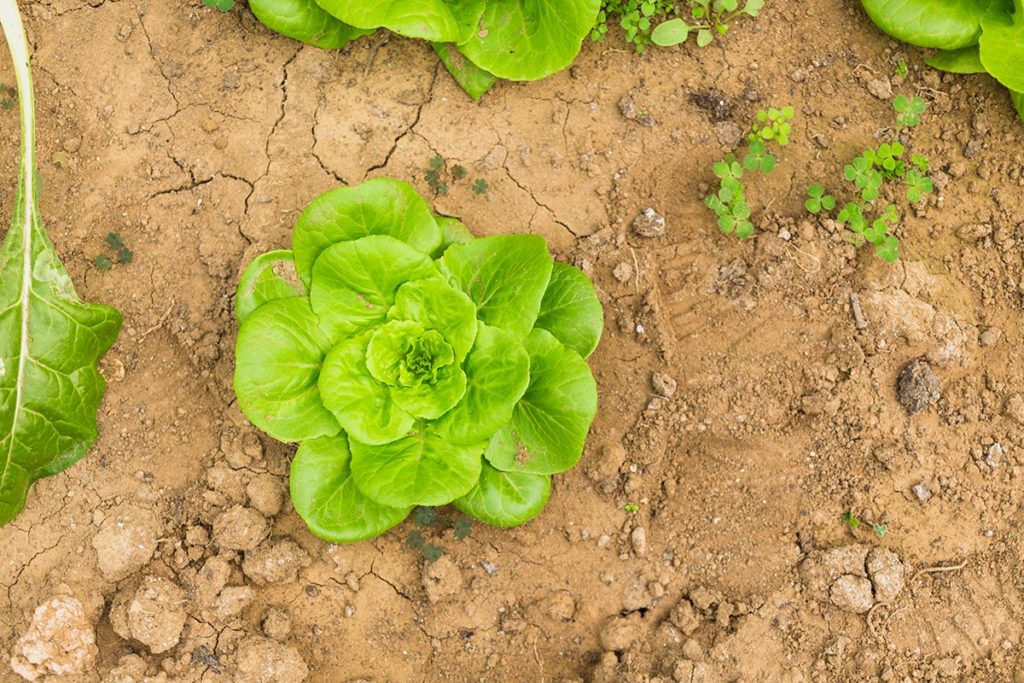
Growing lettuce in winter with high tunnels

There is a wide variety of vegetables that are easy to cultivate due to their nature, such is the case of lettuce, which among its characteristics includes the ability to occupy relatively little space, while its adaptability allows it to be cultivated even between flowers and other types of vegetables of higher height.
Companies dedicated to cultivating lettuce, which requires minimum space for sowing, tend to be inclined towards the so-called ultra-niche crops that offer the possibility to take advantage of a higher percentage of land and other resources, while it translates into many economic benefits for the farmer, since the source of income keeps flowing due to constant production.
The growth of lettuce takes place over several weeks under the temperate climate of spring and fall, so its cultivation thrives quite well. However, after these seasons are over, producers must look for alternatives that allow them to continue cultivating for the remainder of the year in order to offer their product longer.
Benefits of using high tunnels for lettuce cultivation
Among the techniques preferred by farmers for the cultivation of lettuce is the use of high tunnels, since temperatures decrease considerably with the arrival of the winter season and producers must design strategies to protect the crop, in this case, they must be in charge of sowing or transplanting it into a high tunnel or by means of a similar structure that allows them to preserve it longer and, thus, extending the growing season without many inconveniences.
There are several types of lettuce such as Butterhead and Romaine that can be produced during the winter season thanks to the implementation of these high tunnels, which provide a reliable option to extend the growing period and keep customers satisfied. Additionally, winter lettuce that is sown and harvested locally under these conditions is an excellent choice for the agricultural markets and communities that can offer it with a greater degree of freshness and quality, thus encouraging agrotourism.
Some considerations when cultivating in high tunnels
It is important to bear in mind that, beyond the care and protection provided by the use of high ceilings or floating row covers over lettuce cultivation during the winter, this technique tends to reduce the flow of air around the crop, thus increasing the potential for foliar diseases such as grey mould, lettuce drop and soil decomposition, among others.
To maintain the lettuce once it has been harvested, producers must cool it at a temperature of approximately 32° F and then store it at about 34° F with a humidity between 90 and 95%. According to Hightunnerls.org: “Continuous air circulation is recommended; storage containers should be stacked no more than two deep, when possible. Lettuce is ethylene sensitive; so do not store lettuce in rooms or near ethylene-producing crops such as apples. When proper temperature and relative humidity are achieved, lettuce can be stored for up to three weeks. Depending on the growing conditions and harvesting procedures lettuce may need to be washed prior to storage.”
While one of the benefits of promoting lettuce cultivation during the winter season is the fact that the growth of weeds and insects is significantly reduced, farmers must implement strategies to prevent, control and eliminate weeds and insect pests that may adversely affect the crop. Another alternative that helps prevent diseases is to rotate crops, at least every two or three years, if the space in the high tunnel allows it.
We invite you to read our post about the importance of plasticulture in countries with extreme climates, such as Canada. And also the post about the orientation of greenhouses to take advantage of sunlight, which is another vital aspect in order to obtain the best results from our crops.





![[eBook] Sustainability and water management](https://agriplasticscommunity.com/wp-content/uploads/8_550x310_ENG-440x264.png)
![[eBook Trends in Agriculture Plastics] Increasing use of biodegradable mulch](https://agriplasticscommunity.com/wp-content/uploads/550 × 310_2_ENG-440x264.png)
![[eBook Trends in Agriculture Plastics] Reducing the plastic used in the manufacture of agricultural films](https://agriplasticscommunity.com/wp-content/uploads/550 × 310_1_ENG-150x150.png)





















